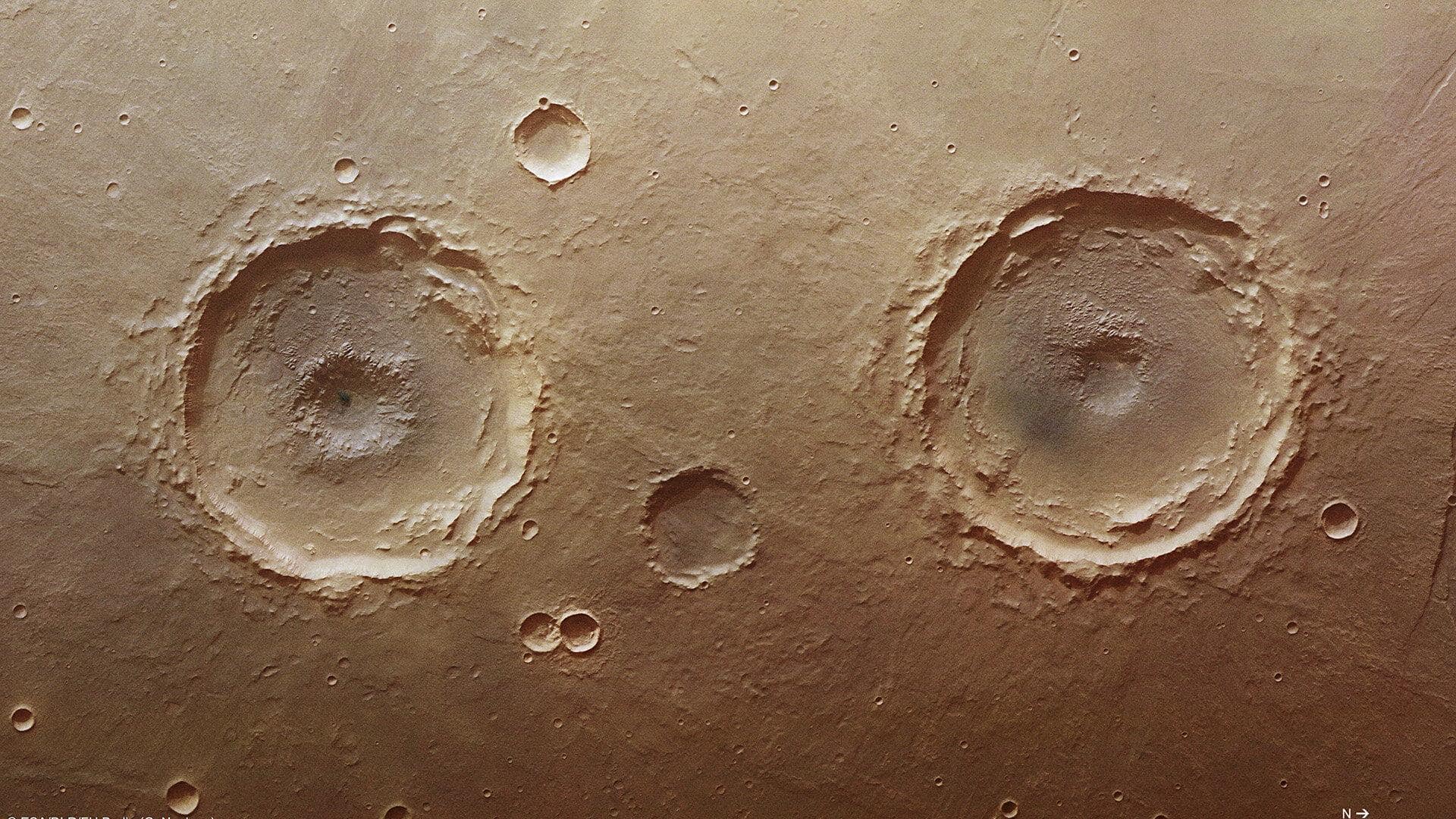
How 2 Martian craters got named after UP, Bihar towns
What's the story
The International Astronomical Union (IAU) has officially approved naming of three newly discovered craters on Mars after a former director of India's Physical Research Laboratory (PRL) and two small towns from the Indian states of UP and Bihar. The craters are located in the Tharsis volcanic region on Mars. The largest of the three, a 65km wide crater, has been named "Lal Crater" in honor of renowned Indian geophysicist and former PRL Director, Prof. Devendra Lal.
why-does-it-matter
Why does this story matter?
The discovery of the craters is a significant achievement in planetary exploration. These craters were discovered by a team of Indian scientists, including researchers from the PRL, in 2021. The naming of these craters was approved by the IAU earlier this month. The IAU is the internationally recognized authority for assigning designations to celestial bodies and their surface features.
Other names
Mursan and Hilsa craters named after Indian towns
The second and third craters, each measuring 10km in diameter, have been named "Mursan Crater" and "Hilsa Crater." Mursan Crater is located on the eastern rim of Lal Crater and is named after a town in Uttar Pradesh. Hilsa Crater, situated on the western rim of Lal Crater, is named after a town in Bihar. These names were chosen to honor the birthplaces of PRL's current director, Dr. Anil Bharadwaj and PRL scientist Dr. Rajeev Ranjan Bharti, respectively.
Scientific significance
Craters provide evidence of past water flow on Mars
The discovery of these craters holds significant scientific value. Although the entire area of Lal Crater is covered in lava, subsurface radar data from NASA's SHARAD instrument on the Mars Reconnaissance Orbiter (MRO) revealed a 45-meter thick sedimentary deposit beneath the crater floor. This implies that there was a past presence of flowing water on the surface of Mars, which carried and left behind substantial sediment in what we now identify as Lal Crater.
Findings
PRL team's findings published in a journal
The smaller Mursan and Hilsa craters provide insights into the episodic nature and timeline of the infilling process. "This discovery confirms that Mars was once wet and water has flown on the surface," said Bhardwaj. "It is a significant step in unraveling the planet's geological history and potential for harboring life," he added. The PRL team's findings have been published in Astrophysical Journal. The crater names have received official recognition from the IAU Working Group for Planetary System Nomenclature.